A piece of living history — or at least mechanical history — has pulled into Manassas, Virginia, for the weekend.
Flights aboard the B-17 bomber Aluminum Overcast will be offered at the Manassas Regional Airport on Friday, Saturday and Sunday.
On Thursday, a group — including those who flew B-17s during World War II — gathered to take a look at the plane, relive memories and experience vintage flight.
As I signed the release before Thursday’s flight that waived rights in case of all sorts of fatal or injurious calamities, it was impossible not to pause and consider the fatal crash three weeks ago of a B-17 in Connecticut. It’s tough enough for me to get on a plane; this was an added edge I didn’t need.
The combination of a love of World War II aviation history with a fear of heights so profound that I need to take deep breaths in order to stand on a chair breeds a tension I’ve never quite understood. In the end though, the prospect of flight — and of not having to explain why I chickened out — won the day.
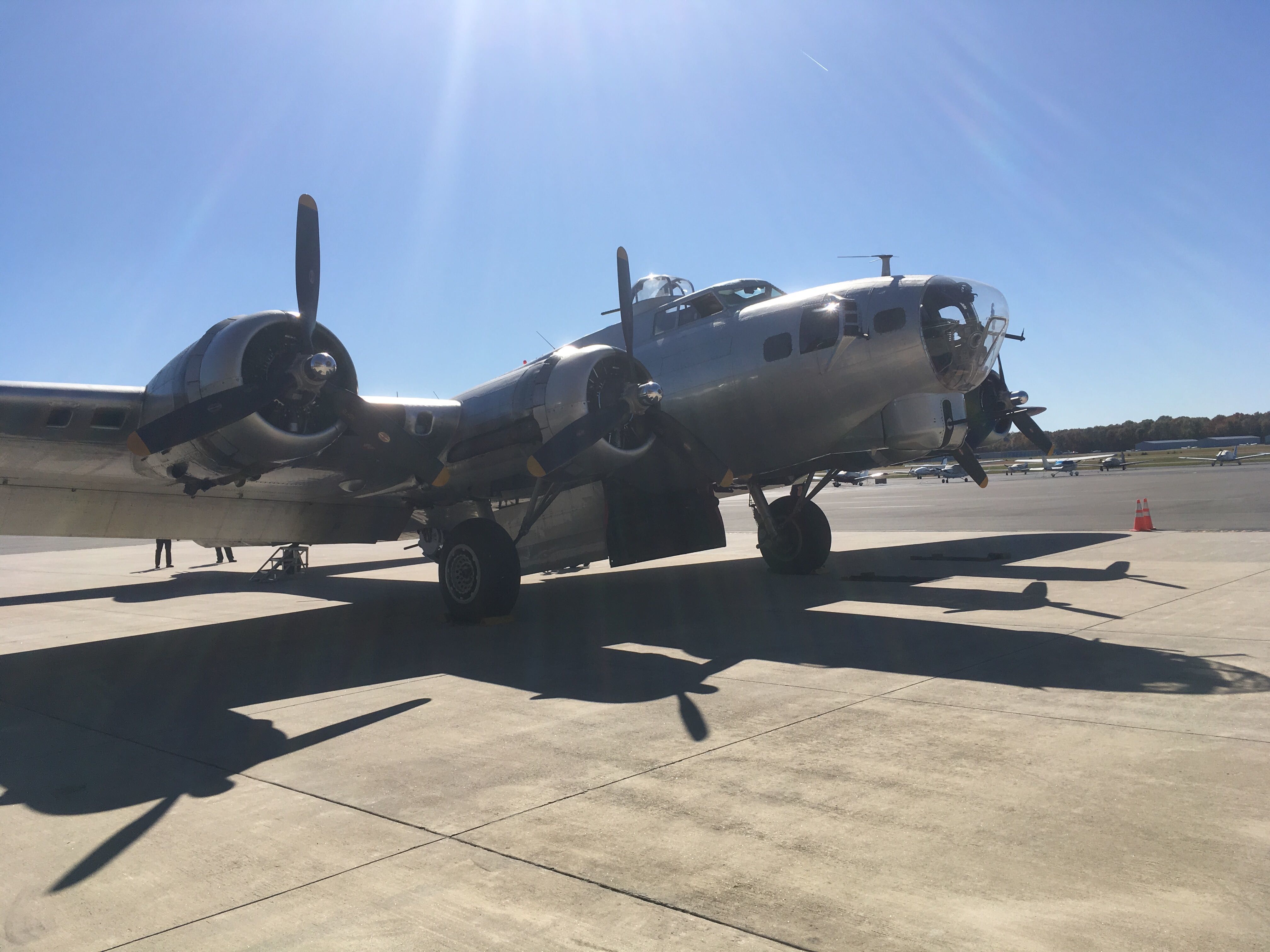
James Dieffendorfer, of Orlando, Florida, who prefers to go by Jimmie D – “I was 13 before I could spell my name” – flew B-17s in the Pacific and took to the skies again on Thursday in what he called “the greatest bomber ever built at the time.”
Mary Dominiak, the local coordinator for the B-17’s visit to Manassas, gave a talk Thursday afternoon on the history of the B-17 and Aluminum Overcast, and remarked on the reunions between decades-lost friends and compatriots.
“There’s magic in that plane,” she said.
There was also a mechanical problem. The first of three flights Thursday was delayed for about two hours, which provided time to talk to veterans such as George Anderson, of Long Island, who flew B-24s in the Pacific.
He was in the area for his unit reunion and was invited to the airport to see the big bomber for himself. Anderson told of landing on a Pacific island one rainy night, blinded by rain and lights, only to discover he’d narrowly missed a row of parked planes.
He also remembered getting chewed out by a ground crew chief for flattening two tires. “I said, ‘I brought the plane back, didn’t I?’”
Discomforts and dangers
The B-17 was the main bomber used by the U.S. in Europe during World War II. It also saw action in the Pacific.
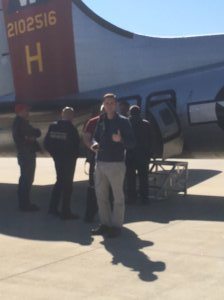
It carried a crew of 10, including a pilot and co-pilot, a radio engineer, a navigator, a bombardier and gunners. More than 12,500 B-17s were produced between 1935 and 1945.
It got its nickname, the “Flying Fortress,” from the fact that it packed many formidable machine guns — 13 on the late-model Aluminum Overcast.
As the afternoon continued with safety briefings, historical lectures and interviews, my fear dissipated. After all, the Boeing engineers who designed and built this plane knew it would be shot at.
The organizers, and some of the World War II flying veterans there, had stories of B-17s coming home with literally thousands of bullet holes and only one engine still working out of four.
It only made the Connecticut crash more confusing — what the heck brought down such a sturdy ship? — but by flight time, I was feeling reasonably calm. Listening to Jimmie D and George Anderson helped.
Missions flew at 30,000 feet, an altitude at which there’s very little air pressure. The air in the B-17 wasn’t pressurized, like on today’s airliners, so the flight crew had to use oxygen masks to breathe. Indeed, given that you can see the ground through gaps in Aluminum Overcast’s floor, the idea of pressurization is somewhat ludicrous.
At 30,000 feet, it’s between 30 and 60 degrees below zero, so crews bundled up, even the ones who flew in the Pacific where it was 90 degrees on the ground. Oxygen tubes could freeze at that altitude, so crew members regularly checked in with each other over the radio to make sure everyone was still alive.
The Eighth Air Force, which flew the majority of B-17 missions over Europe during the war, was based in England. From there to targets in France, Holland, Germany, Poland and others, flights could take five hours each way.
With hundreds of planes climbing through a foggy English morning, crashes were frequent.
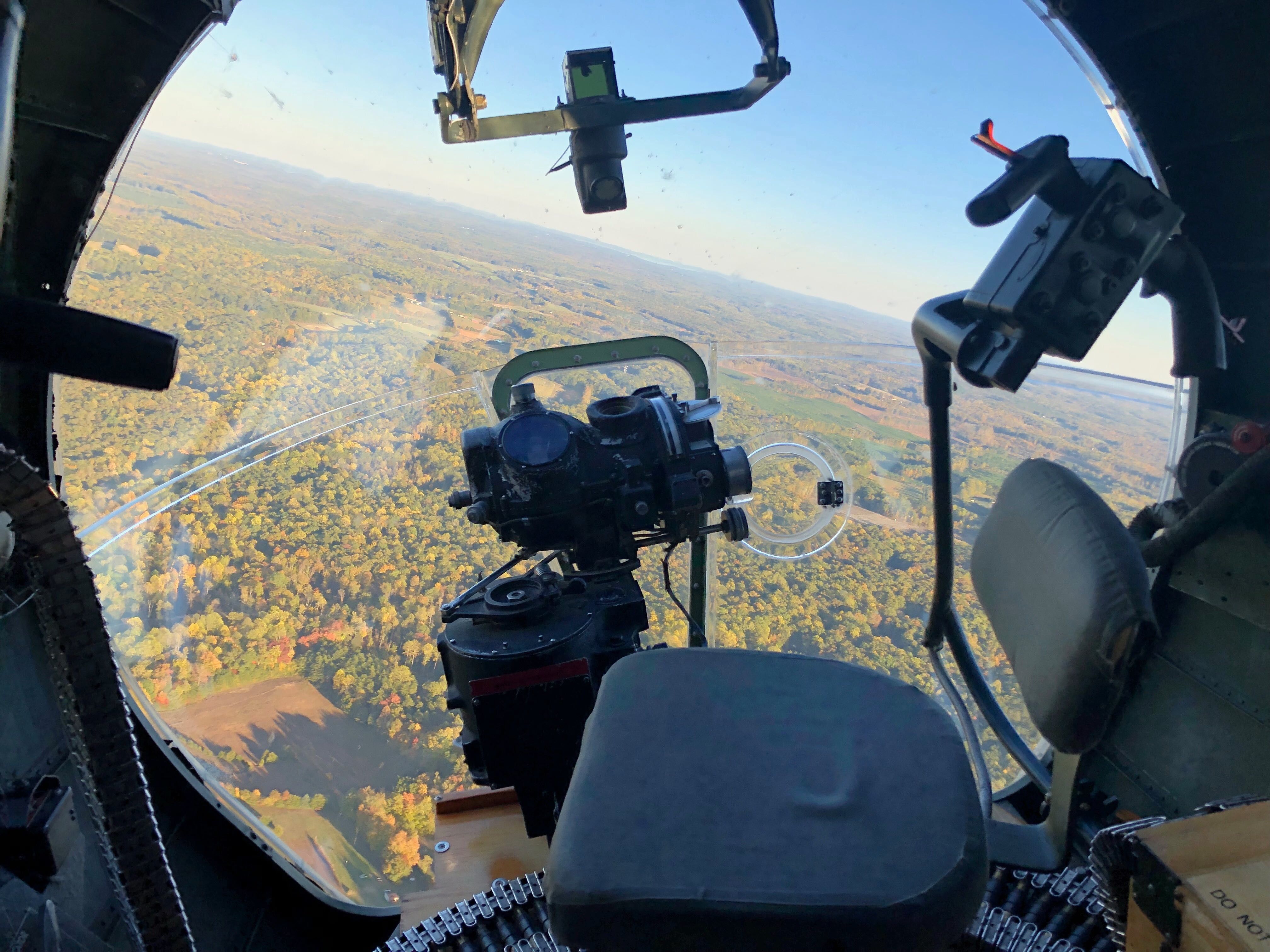
That’s before the enemy fighters and the flak got started. The guns of the Flying Fortress supposedly meant that it didn’t need fighter escorts. It turned out that it did, and suitable fighters didn’t come onto the scene until 1944.
Unlike World War I, there was a parachute for every crew member aboard a B-17 — but only the pilot and co-pilot could wear theirs at all times. Everyone else wore a harness and, in the event they were being shot down, had to grab their parachute quickly. They didn’t always make it.
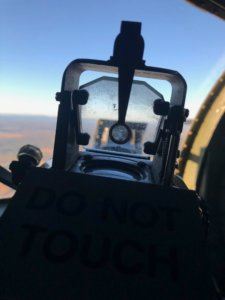
The association said 4,735 B-17s were lost in combat, and thousands more in crashes and training accidents. Not every loss meant the loss of the entire 10-man crew, but a lot did.
The Eighth Air Force had more than 55,000 casualties, the most of any American unit in the war. The Army Air Corps set 25 missions as the standard for completing a tour of duty in a bomber. At the time, the average crew only made it through about 10.
‘A big dump truck’
When the B-17 was introduced in 1937, it broke speed and altitude records. Things have changed since then.
Shawn Knickerbocker, who has been flying Aluminum Overcast for six years, is a former military pilot who served in Iraq and Afghanistan. He was asked how the B-17s compared to the jets he is used to.
“Flying a B-17 is similar to driving a big dump truck with four flat tires and no power steering. It’s not very maneuverable,” he said, laughing. “You have to plan where you’re going.”
Still, he said, keeping the history of the plane alive and giving those who served in it a chance to feel the sensation of flight again is “a privilege and an honor.”
Aluminum Overcast was made too late to see action in World War II; it was delivered to the Army Air Corps in May 1945. Only about 15 B-17s are still airworthy, the association said.
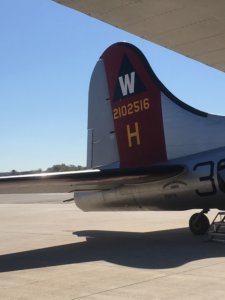
The plane bounced around several owners. It was once sold for $750, which is less than it cost to fill it with gasoline. It is now operated by the Experimental Aircraft Association, a group of aircraft enthusiasts based in Wisconsin dedicated to popularizing flying, including to those who might not otherwise get a chance to experience it.
Finally, after hours of delays and watching WTOP’s John Aaron take to the skies on the day’s first flight, my time had come.
Going up
Flying in a B-17 didn’t pack the same kind of terror that I fought back while flying in a Tiger Moth, an open-cockpit biplane from the 1930s. It inspires a different kind of feeling, something maybe not as primal but still powerful.
On the bright, sunny afternoon, 10 of us, plus a pilot, co-pilot and an Experimental crew member, packed ourselves into nothing more — or less — than a metal tube made to carry bombs. It was more claustrophobic than anything else.
I’ve been on a Cold War-era Russian submarine that had more room; going from the tail to the nose and back took nearly the whole 15-minute flight.
It was loud, too — roughly the volume of a concert at, say, a 2,000-seat venue.
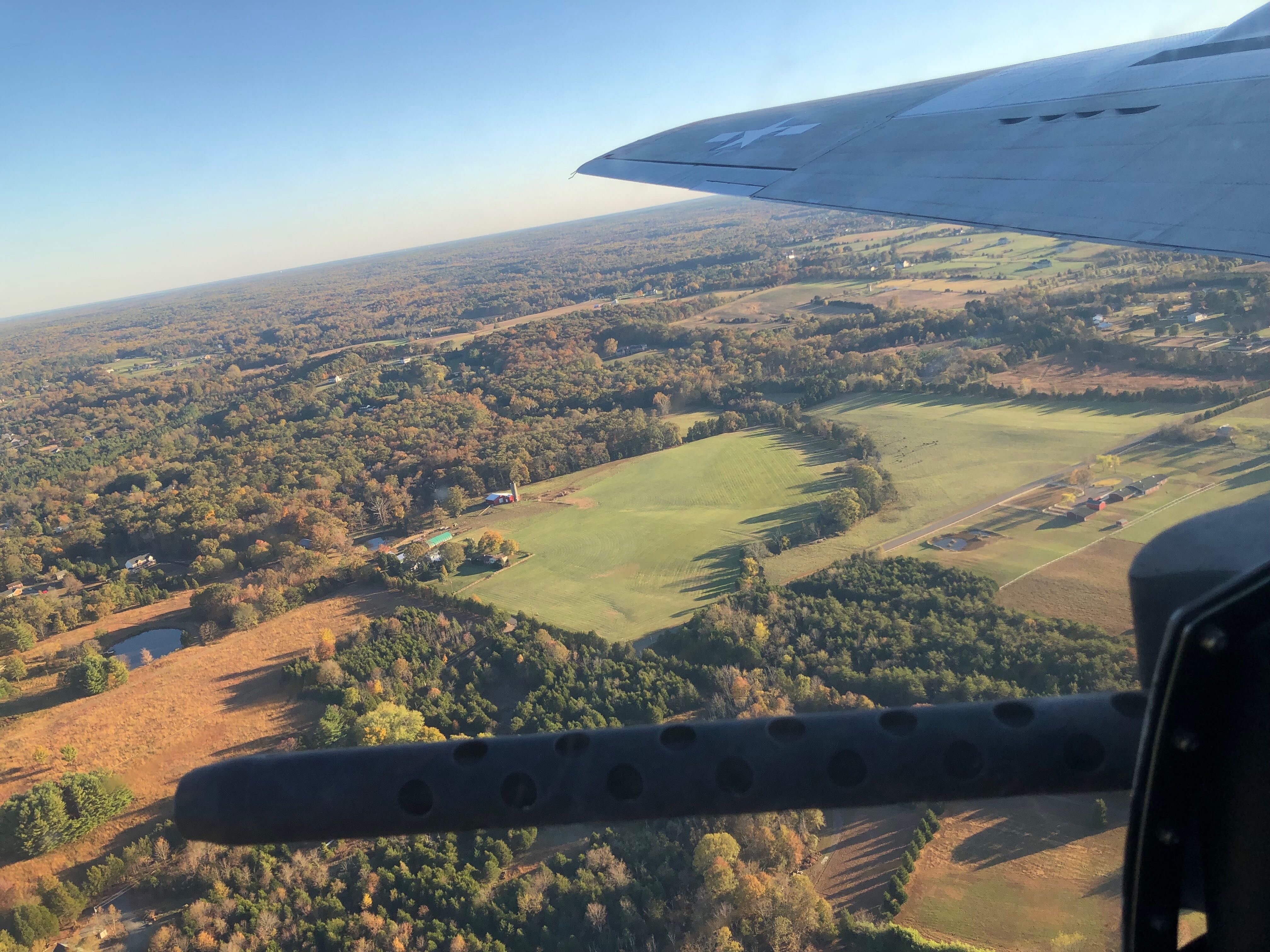
I honestly hoped it would be scarier. I wanted to honor the service of the men who flew on the B-17 by crouching in the back and imagining bullets coming through the fuselage, our own guns blazing, smoke, explosions, sudden swerves and the sight of enemy planes buzzing and shooting, and other Fortresses going up in flames.
But at 1,000 feet on a sunny Virginia afternoon, I couldn’t manage it.
George Anderson was satisfied, though, and he ought to know. He wasn’t able to get up and walk around during the B-17 flight Thursday, but his daughter, Gwenn Capodieci, said afterward, “He said that the memories were flooding back.”
After the landing, Anderson made a beeline for the front of the parked plane.
“He had to tell the pilot what an incredible landing he made,” Capodieci said.
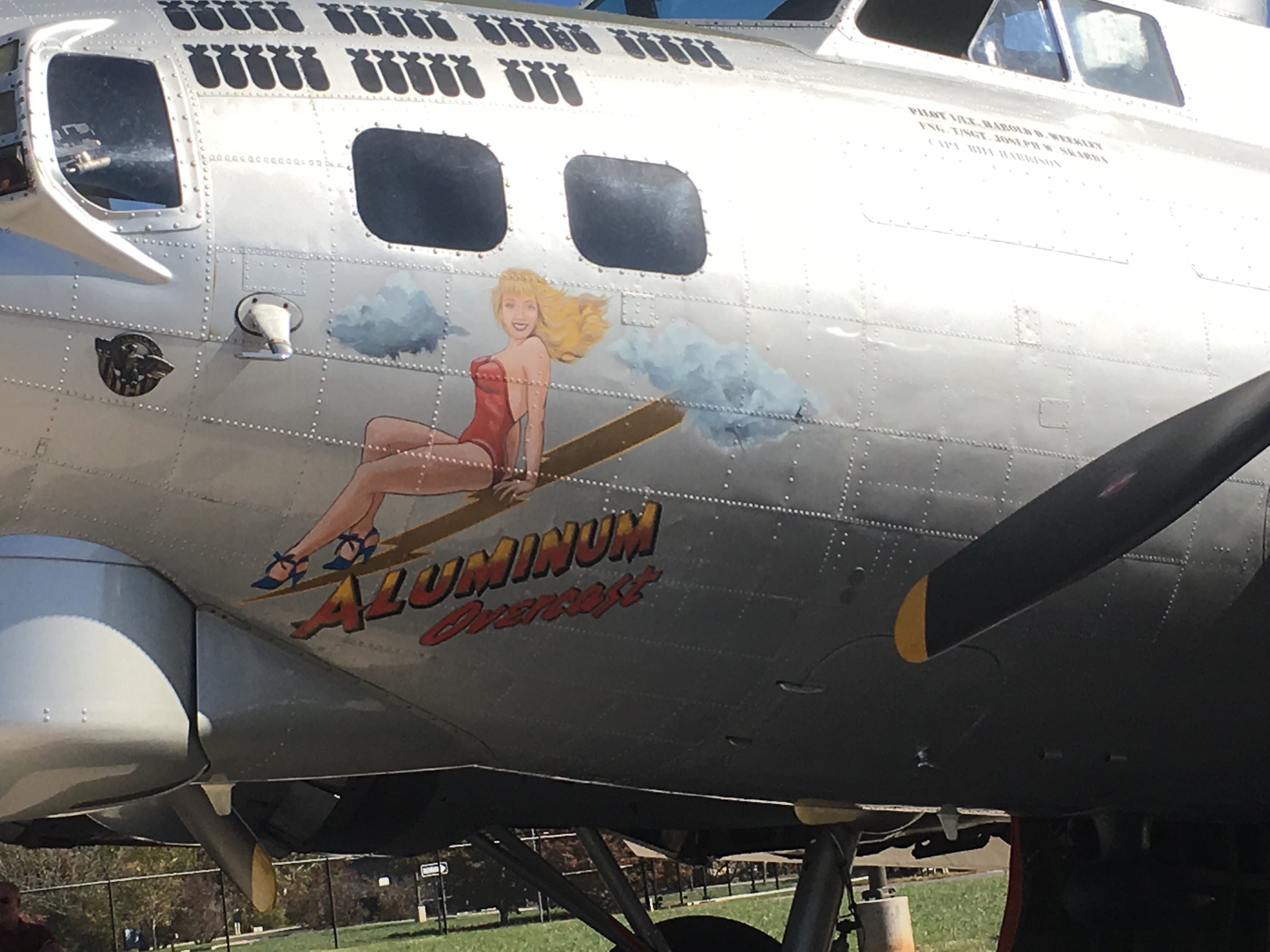
Pricey
Flights aboard Aluminum Overcast will be offered Friday, Saturday and Sunday mornings. Once the flights are over, Dominiak said, people will be able to tour the plane on the ground and have a look at the environs for themselves.
It’s pricey — tickets for the flight are upward of $400, even with a slight discount for association members. Tickets to climb aboard while it’s on the ground are $20 for a family of any size.
“It is not cheap, alas, to keep a four-engine bomber flying,” Dominiak said. “She’s not exactly a gas-sipper.”
A spark plug was the cause of Thursday’s flight delay, and that’s not exactly an item one can run down to AutoZone and pick up either.
She added that they hadn’t seen any drop-off in interest since the Connecticut crash — 76 people booked flights over the weekend already.
You can buy tickets online, or make reservations by calling (920) 371-2244.
Appreciation for the B-17s and accomplishments of the men who flew them was evident Thursday.
After stepping off the B-17, Capodieci said, “I am so thrilled to be among all those men who served our country in that way … It was more than I thought it would be, and to experience it with my father was amazing.”








